For chemists isolating their synthesized product in maximum yield and purity is a primary goal. Sometimes the crude reaction mixture stays in solution, sometimes it does not. In these cases, is it better to just redissolve in a strong solvent, say DMSO, or to filter, wash, and then purify? After all, the precipitating material may be unreacted starting material and could potentially complicate the subsequent flash purification step. On the other hand, it may be product crystallizing on its own and worthy of your attempt to isolate it without further work-up other than filtration.
That was the situation I encountered recently after performing the synthesis of N-(2-anilino-2-oxoethyl)benzamide, aka hippuranilide, in ethyl acetate which lead to this post.
The simple reaction of hippuric acid (~500 mg) and aniline (~300 mg) to create the target anilide was performed using a Biotage® Initiator+ at 200 °C for 10 minutes, Figure 1. Hippuric acid is not ethyl acetate soluble but with heat, base, and mixing, it does solvate allowing the reaction to occur.

Figure 1. Reaction of hippuric acid and aniline in ethyl acetate.
After synthesis, the reaction mixture was a clear, orange solution but quickly crystallized once transferred to a 20-mL scintillation vial, Figure 2.
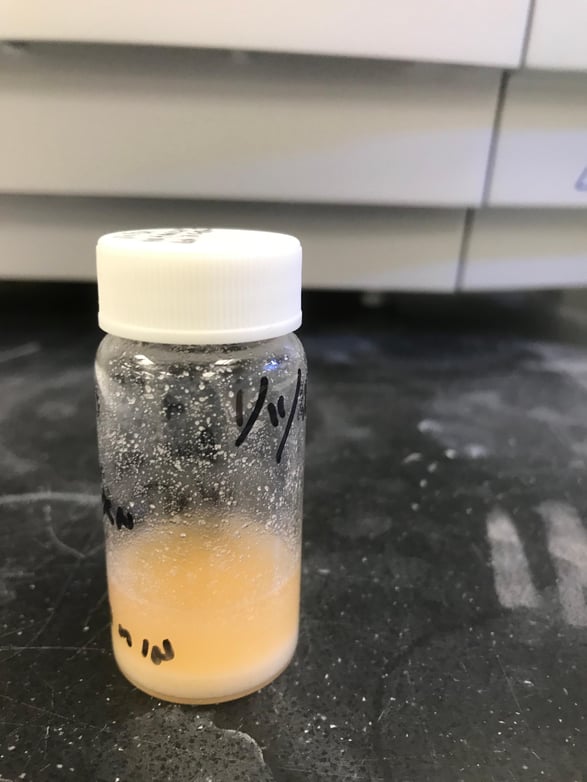
Figure 2. Auto-crystallizing reaction mixture.
I transferred the reaction mixture to an ISOLUTE® Phase Separator and washed 3x with 2 mL EtOAc to remove any soluble material, Figure 3. This vial was then dried using a Biotage® V-10 Touch to an orange oil. The crystals were dissolved in methanol (5 x 2 mL) with the solution collected in a separate scintillation vial and evaporated to yellowish crystals weighing 360 mg.
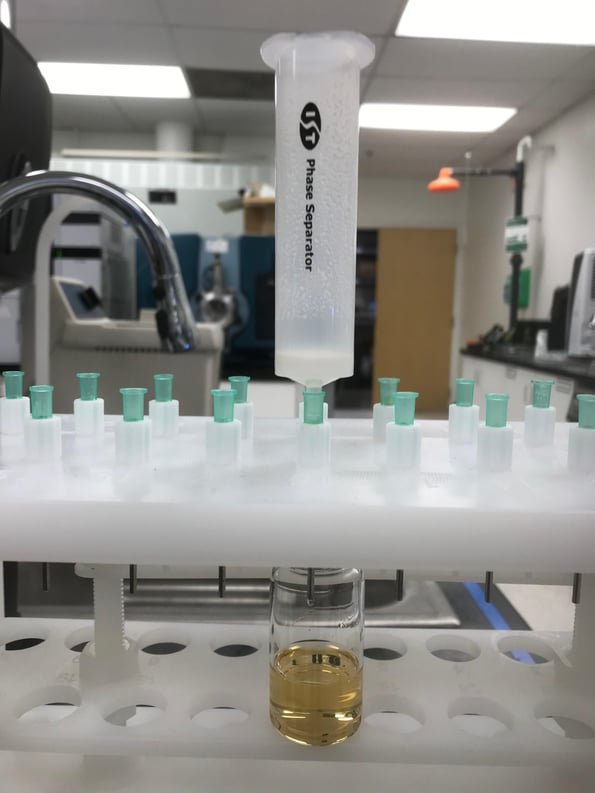
Figure 3. Ethyl acetate wash of crystallized reaction mixture.
Each vial’s contents were dissolved in 1 to 2 mL of DMSO for purification on a 12-gram Biotage® Sfär C18 column using a Biotage® Isolera Dalton 2000 flash system with in-line mass detection. I used the mass detector to verify the product’s elution, separation, and identification but also to test for possible breakthrough with the large injection volumes (>1.5 mL for each purification).
The purification method (35-85% MeOH in 10 CV), provided an excellent separation of both the ethyl acetate wash and the re-dissolved crystals at high loading, ~500 mg and 360 mg, resp, Figure 4. However, total recovered product was only 71 mg (8.4%)
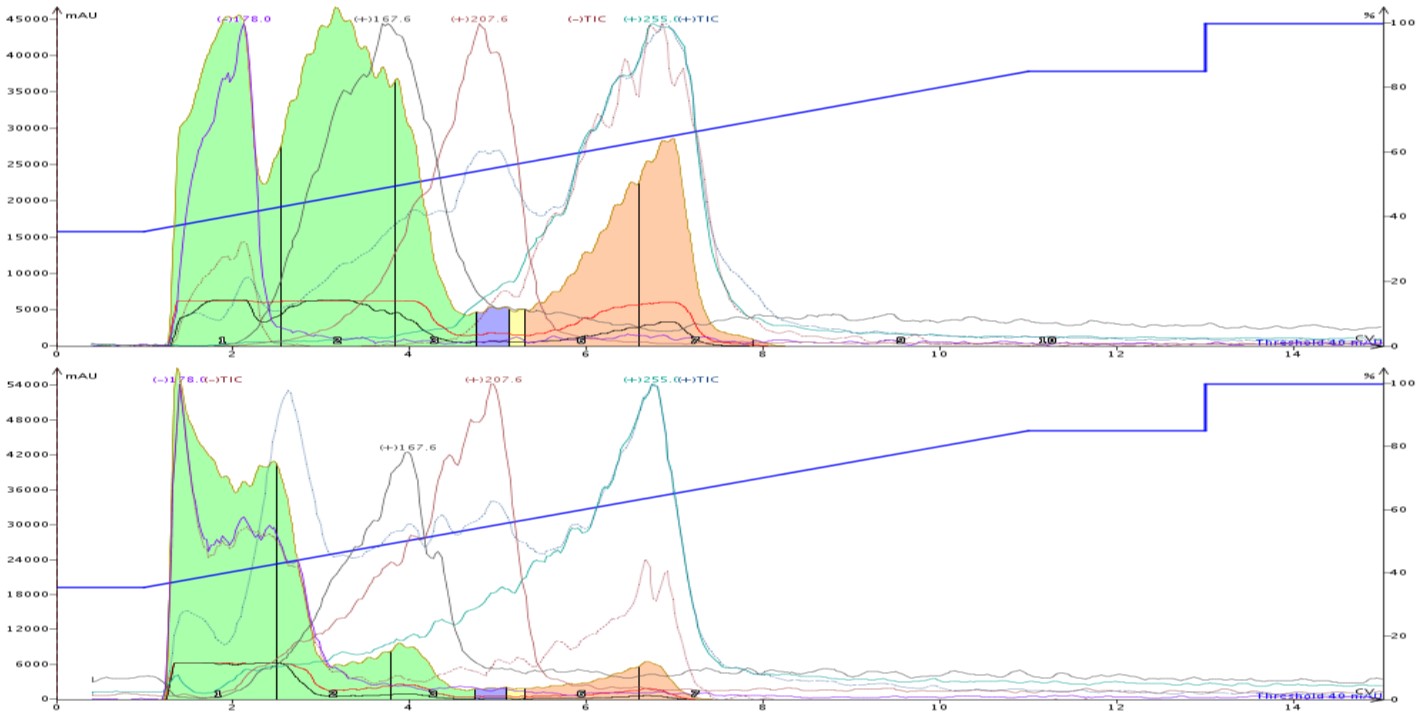
Figure 4. Purification chromatograms of hippuric acid + aniline reaction products. Top - ethyl acetate extract (~ 500 mg). Bottom - reaction crystals (360 mg). Most of the product (pink peak in both chromatograms) was extracted from the crystals and well separated even with high loading.
To obtain comparative data for purifying the entire reaction mixture, the synthesis was replicated using the same conditions. This time the reaction mixture was dried yielding 846 mg of crude material. I added 1 mL of DMSO to dissolve the crude and injected the entire volume onto the C18 column resulting in a good separation, Figure 5.
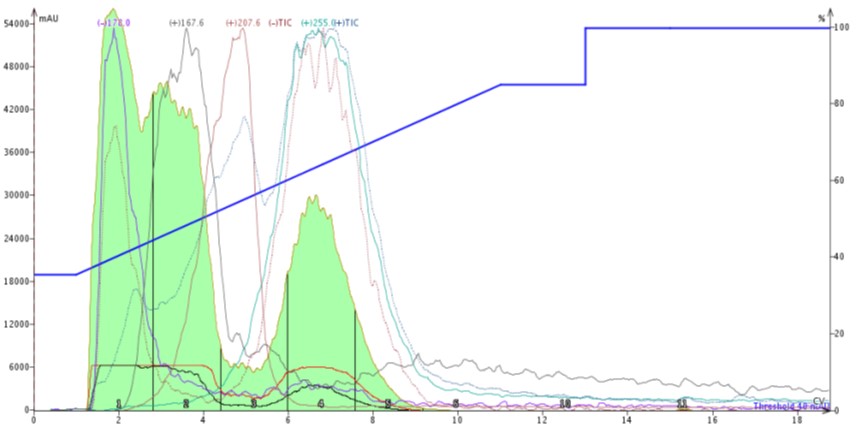
Figure 5. A 846 mg load of crude reaction mix purified on a 12-gram Sfär C18 column (7% load) with excellent resolution. The product is in fractions 3, 4, and 5.
The product was collected in fractions 3, 4, and 5. Fractions 3 and 4 immediately showed compound crystallization, Figure 6. These two fractions were evaporated into a single vial resulting in 99 mg of purified product, hippuranilide. Fraction 5 had a yellow hue and was evaporated separately yielding 9.5 mg of slightly contaminated crystalline product. Total product recovered - 108.5 mg (12.8%).
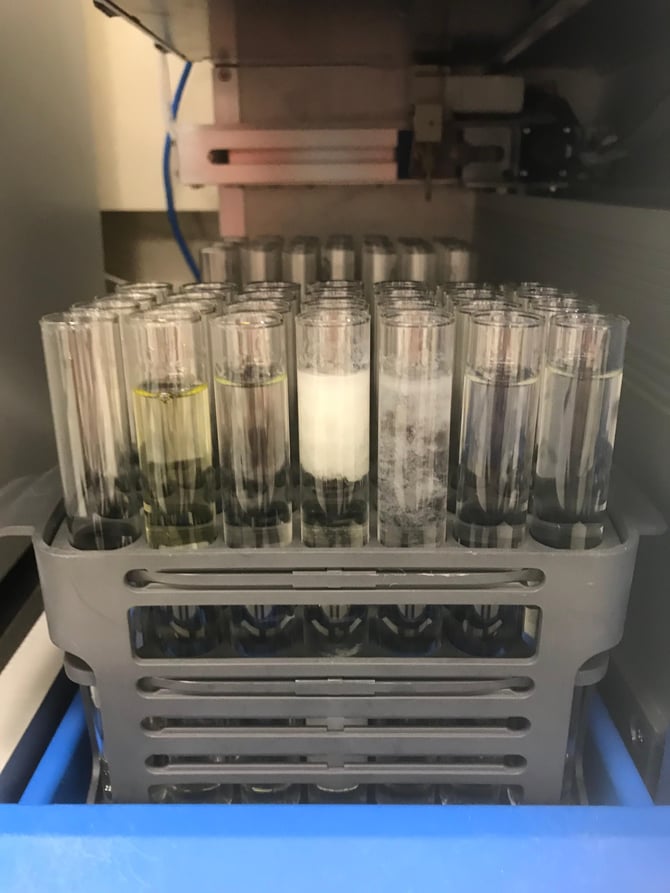
Figure 6. Collected fractions 3 and 4 from the crude reaction mix purification (846 mg) auto-crystallizing.
So, when you encounter reaction mixtures that auto-crystallize, you are better of drying the reaction mix, redissolving in a suitable solvent, and purifying it rather than trying to filter to solid and extract product/by-product. Your yields, and likely purities, will be higher.
For more flash chromatography tips and tricks, check out our whitepaper - Successful Flash Chromatography.

